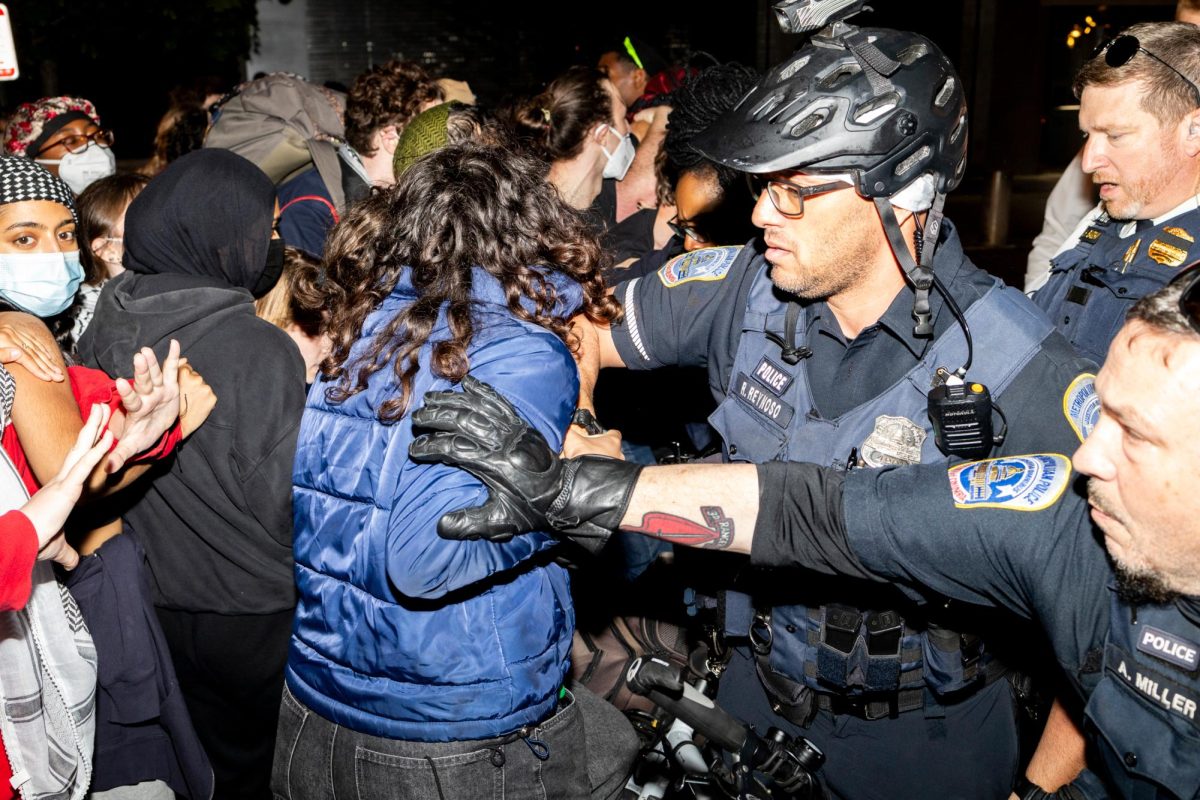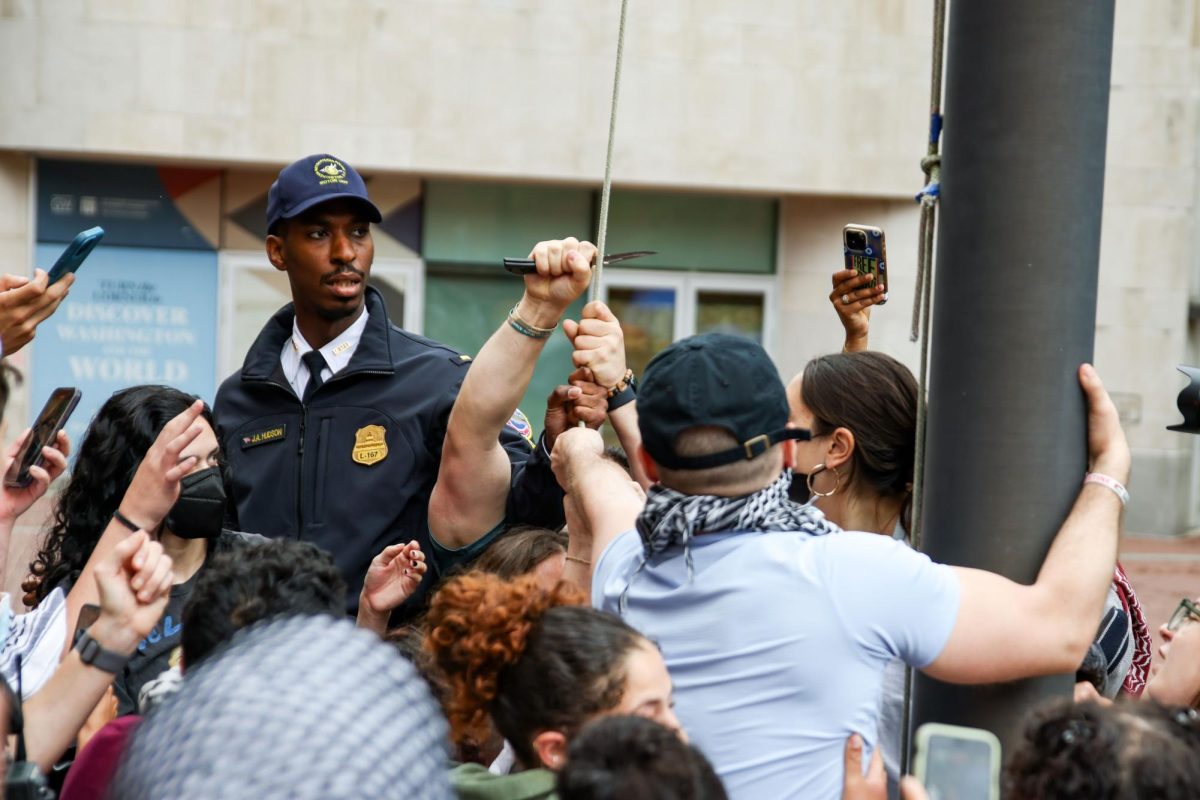GW’s campus now has more gates than student newspapers.
When the satirical newspaper Protest THIS! folded its print edition last month, it joined the ranks of several other upstart publications that ended their runs because money was tight.
Campus publications such as It magazine, Unfiltered and The GW Independent have closed down in recent years, forced to close because advertising revenues, GW funding and personal capital from staff members were not enough to support publication.
But students and administrators say alternative media could play a vital role in communication on a campus marked by tremendous diversity in viewpoints. Editors of alternative publications say the difficulty of selling advertising and attracting GW support present major obstacles to survival.
“There seem to be a lot of people with ideas and energy and all the other things you need to make this work,” said Deborah Valdez Snelgrove, executive director of Student and Academic Support Services Communication and Technology and a member of the University’s student publications committee.
“People come up to me and say, `I really miss your paper,’ ” said Jeff Baxter, editor in chief of the now-defunct GW Independent. “A lot of people have a dissatisfaction with The Hatchet on specific issues.”
Somaree Taru, the editor in chief of the University of Maryland’s Black Explosion, says mainstream campus media’s coverage often is constrained by limited space.
“With spot news, it’s who, what and where, just because of space. That doesn’t give the coverage you need,” Taru said.
At Maryland, the activism of the 1960s spurred the creation of several alternative papers that thrive today, representing minority groups that felt their concerns were not adequately covered by the daily independent paper.
Taru said The Diamondback, Maryland’s mainstream paper, did not adequately cover several recent racially motivated incidents on campus, leaving The Black Explosion to fill in the gaps.
“The Black Explosion must report things like that so they don’t get swept under the rug,” she said.
Baxter said The GW Independent, which made an attempt to go weekly after publishing twice monthly as The Authority and Independence Magazine, had an operating budget of $30,000 to $40,000 a year. Protest THIS! received $1,500 in allocations from the Student Association this year, and spent $700 on a run of 6,000 copies in October, said David Jones, editor in chief of Protest THIS!.
Even with other support, advertising money is the lifeline of a student newspaper, especially one that wants more editorial independence.
“Part of the reason we couldn’t get advertising revenues is that we’ve only been around for about a year,” Protest THIS!’s Jones said. “When you don’t have a history it’s difficult to get advertisers.”
“We can make a case for local advertising,” Baxter said. “We can say to advertisers, `Our readership is a niche market.’ But national advertising is basically impossible to get.”
Most national advertising in college newspapers is run out of several large agencies that serve as middlemen between national advertisers such as credit card companies and airlines and college papers. Baxter said agencies often are unwilling to place ads in alternative papers when an established paper already publishes on campus.
Alternative media also have had limited success in selling space to GW advertisers, but even contracts with GW departments and offices are not enough to keep a paper afloat for an extended period of time.
“Last year we were able to get full page ads with (the Student Activities Center) or (the Program Board) and other organizations within the University,” Jones said. “That didn’t happen this year, so we had to look off campus for advertisers.”
But advertising is not the only way GW supports alternative papers. The GW Independent and Protest THIS! were student organizations, receiving funding from the SA and office space in the Marvin Center.
“I think the University is very supportive with advertising,” Baxter said. “And I think they were even more supportive above and beyond a business level. But still, there’s no comparison between what the University gives The Hatchet and what it gives alternative media.”
The GW Hatchet, which publishes twice weekly, independently incorporated in 1993, severing ties with the University to gain editorial and financial freedom. It operates as a nonprofit corporation, generating revenue through the sale of advertising in the print edition and on its Web site. The pillars of support GW still gives The Hatchet, including a leadership stipend for the editor in chief, will be phased out over the next five years.
Snelgrove said GW’s publications committee is a good starting point for students who want to create a publication.
“It’s naive for any upstart publication to think they can be funded entirely by the University,” she said. “But they can come to us to discuss seed money to get launched. The resources don’t have a lot of people competing for them.”
The committee is a sort of “investment club” where student journalists can test their ideas, Snelgrove said.
“I don’t think the University should be in the business of subsidizing publications,” Baxter said. “What they could do is give publications a $15,000 or $20,000 start-up grant.”
Baxter said The GW Independent shied away from accepting SA funding in recent years.
“The SA doesn’t have the money to support alternative media,” he said. ” I didn’t like the money coming out of student groups. I don’t think students should be forced to pay for a publication out of their tuition.”
-Tammy Imhoff contributed to this report.







